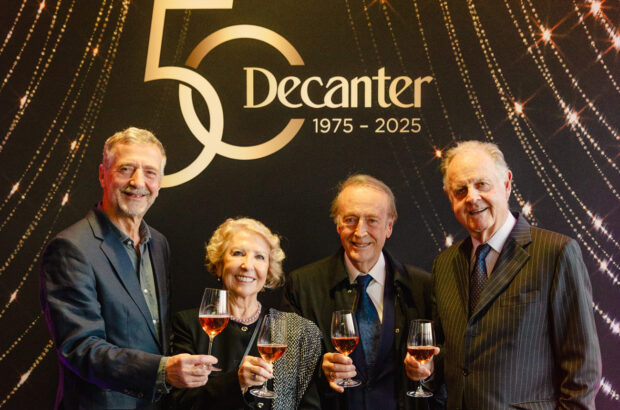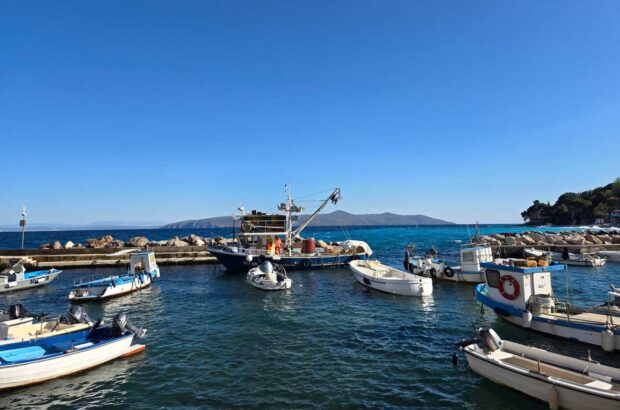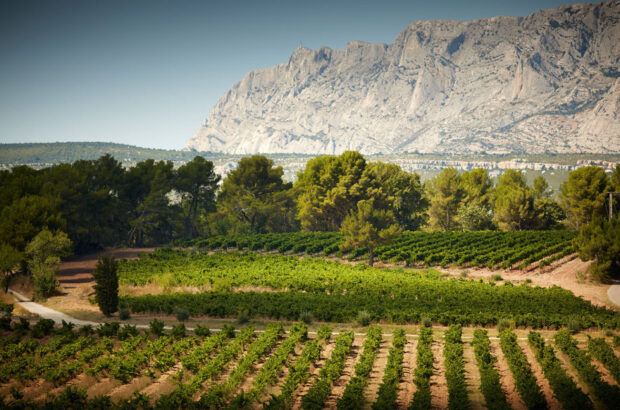Jane Anson traverses Left and Right Banks, tasting vat samples of the fledgling Bordeaux 2017 vintage and speaking to consultants and winemakers about what to expect from the wines.
Are you ready to start thinking about Bordeaux 2017?
As December approaches, the vast majority of the wine has now finished not only its initial alcoholic fermentation but also its second softening malolactic version, and thoughts are turning to blending and moving into barrel for ageing.
It’s still early of course, but in vintages like 2017, where things were not exactly smooth sailing, assembling pieces of the puzzle is more critical than ever.
Just published for Premium members:
I’ve tasted through dozens of vats at châteaux, spent several days with consultants during their harvest rounds, and this week spent a drizzly Tuesday morning at the second annual vintage presentation by Enosens oenology centre, whose various consultants cover more than 30,000 hectares of Bordeaux, so offering a seriously comprehensive overview of the region.
This is becoming a really unmissable event because after the theory part, they offer a tasting of samples from over 20 different appellations across all corners of Bordeaux, presenting three levels of quality, from the basic level to the best, all unnamed chateaux but with terroir, village, blend and winemaking method given.
Key Points for Bordeaux 2017 so far
- 2017 was complicated, but there are some excellent wines. Expect plenty of freshness and drinkability from wines that will offer excellent value, and others that will rival 2016 in terms of ripeness and ageability. But they are likely to be the exception not the rule, making careful selection key.
- Frost impact means uneven ripening across appellations and individual plots. And of course less wine to bottle. Overall volume stands at 345,000hl across all Bordeaux appellations, a drop of just under 50% on last year.
- A corridor of early-ripening gravel soils along the Garonne river protected many of the Médoc classified estates in St-Julien, Pauillac and St-Estèphe and pockets of Margaux, and again along the opposite banks of the river in Bourg and south of the city in parts of Cadillac Côtes de Bordeaux and Entre deux Mers again following that corridor of the Garonne river. Some parts of Pomerol and St-Emilion also escaped the worst of the frost.
- Rain in September was not such an issue for dilution as the grey skies. Much of early to mid September saw days at 18 degrees and nights at 16 degrees, with covered skies, so the grapes didn’t concentrate in the usual way. This is because it’s never about rain only, it’s about rain versus evaporation. It’s why 2003 so punishing because there was huge evaporation, and why rain in the 2015 harvest was not so critical because it was able to evaporate in most cases.
- Co-fermentations of different grape varieties was more common than usual because one of the biggest challenges in frost hit areas was finding enough volume to fill tanks. It meant that some harvest dates were the same for Sauvignon and Sémillon, or Merlot and Cabernet Franc, for the practical reason of filling vats.
- The toughest thing was to handle those plots that were partly affected by frost, and to effectively sort out the grapes in terms of harvesting dates and cellar work.
Background First…
Much of this you already know. 2017 saw a warm start to the year, up to 1.5 degrees more than usual across both February and March, with an April that was overall average but with extreme highs and lows – including that famously destructive frost.
Things turned very dry over the summer months (with 50% less rain than average, although worth noting that July was warm but with cloud cover, with 30% less sunshine than average), with the water stress particularly affecting sandy soils and young vines.
This came to an end with a rainy (but less than 10% more than average) and relatively cool (5-10% less sun than average) September that hastened harvest in some cases. Oh, and for some really unlucky regions, notably in parts of Graves, there was a hail storm at the end of August.
The worst hit by hail had almost all also been affected by frost.
See the frost damage map at the bottom of this column.
An early year, luckily
The early budding and flowering in 2017 was critical, at least one week earlier than the 30 year average around May 27, with colour change (veraison) the earliest for 20 years, three weeks ahead of normal.
The second round of budding and flowering for vines affected by frost came around three weeks later, with veraison catching up to around two weeks behind.
All of this meant that many vineyards were able to shrug off September rains because they had reached phenolic maturity… if they had not suffered from frost.
Alcohols
Relatively low across the region, with averages for Sauvignon Blanc, according to oenologist Fabien Faget, at:
- 13% abv for Sauvignon Blanc
- 12% for Sémillon
- 12.7% for Merlot
- 12.5% for Cabernet Sauvignon.
Anthocyans are good, so expect some deeply coloured wines (again, on the non hail affected areas), with overall low pHs.
Whites
Early harvest this year, most starting by the end of August due to water stress, which meant almost all whites were safely in before any September rains.
Expect excellent aromatics in the Sauvignon Blanc particularly, clean fruit and good balance – although small volumes.
Muscadelle also did particularly well, although it represents just 6% of overall white plantings.
Look out for producers who were affected by frost and therefore chose to pick both Sauvignon and Sémillon at the same time to fill tanks – the example I tried of this clearly had maturity issues with high acidities.
But apart from these, the rest of the AOC Bordeaux Blanc and Entre deux Mers that I tried had very good aromatics and a rich mouthfeel but with classically fresh acidities. I tasted some excellent whites from clay soils around Rauzan – and also Sauveterre-de-Guyenne in the southern part of the region.
Rosés
Grapes devastated by frost were sometimes used for rosé wine this year. I tasted three quality levels, one where different varieties were picked at the same time to fill vats, the second a more technically-driven rosé with some carbonic maceration and the third all direct press from a blend of grapes.
Expect low tannins, a bit of residual sugar to fatten things up, and a focus on fruity flavours, perhaps helped by low temperature vinification.
Reds: AOC Bordeaux / Bordeaux Supérieur / Côtes
A year where you needed to be flexible and on the ball. As with the whites, 2017 was an early harvest for reds, with most underway by the first week of September.
The frost means uneven quality and you will find some vegetal, pyrazine characteristics, although by no means across the board (and much of this will have been reduced anyway by touches of thermovinification to flash out those green pepper notes and round out the tannins).
The difference between the entry level and the best of the AOC Bordeaux was really striking – even though you can bet the final price won’t be.
There are some great wines lurking out there – the best I tried had rich ripe fruits and soft tannins, hugely different to the frost-affected ones where the fruit was a little thin. A mixed result in the Côtes, as you would expect across such a large area.
Côtes de Bourg was less affected by the frost than most, as were parts of Cadillac Côtes de Bordeaux – particularly in both instances along the banks of the Garonne.
I tasted wines with relatively high acidities but good quality fruits. Look out for bitter tannins in the ones affected by frost.
Left Bank
The plots untouched by frost had no particular worries and many of the premium reds will be showing excellent wines during en primeur with rich black fruits and no issues with over-maturity or cooked flavours.
From mid-September there was rot risk that gathered pace by the end of September.
It meant that early-ripening soils really came into play, because harvesting happened fairly rapidly in most areas – a week to 10 days before some of the later ripening areas would have ideally liked.
Graves
Around 70% of Graves suffered from hail, and for those areas that got hit by both frost and hail (notably Cerons, Portets, and parts of Cadillac), early harvesting was a serious issue, and there will be some under-ripe wines in these regions.
Oenologist Pascal Henot told me that from September 1-18 there was always rain somewhere around Graves.
‘Not always in the same place but many just couldn’t wait long enough to harvest at full ripeness’. And fruit that had a tough time to ripen can be easily dominated by oak if the winemaker isn’t careful.
Pessac-Léognan
Really a year that underlined the benefit that Pessac-Léognan derives from being close to the city and its effect on temperature. Vineyards in this appellation were far less affected by frost (although they didn’t escape entirely) and didn’t get the hail.
The difference it made was significant – I would expect some of these reds to be better than 2016, because Pessac’s early ripening soils meant they were one week further along when the rain arrived in September, and most were able to be harvested at full phenolic maturity.
Médoc
Unlike 2015, the September rain in the Médoc fell relatively evenly across the whole peninsula. Instead the biggest difference in the results comes largely from the distance from the river – Listrac and Moulis were more affected by the frost than the communes that sit alongside the Garonne, and Listrac suffered again from the rain at harvest in sectors that had sandy soils.
The rain fell during the Cabernet Franc ripening period in many areas so you might find there is less of this grape used in the final wines.
Outside of the well-known appellations look out for Haut-Médoc wines from St Seurin de Cadourne, which seem to have done very well.
Overall I found some chewy tannins, good black fruits with clear ripeness. Gravelly soils overlooking the river is where the action is – early ripening and protected from frost, so they ticked the box at both ends of the season. Outside of those, expect fresh flavours, mint, classic Médoc signatures.
Right Bank
St-Emilion and Satellites
A mixed result, with some châteaux devastated by frost and others left relatively unscathed. There is some dilution in the wines that didn’t escape frost and that didn’t concentrate fully enough in September. The best have excellent fruits and soft tannins, even some of the joyful flavours of 2015.
The parts of the limestone plateau that escaped the frost, notably around Saint Christophe de Bardes, I found some wonderfully fresh acidities balanced against lovely ripe, rich red fruits.
Pomerol and Lalande
Lalande de Pomerol saw around 75% frost. Expect lower alcohols than usual and a focus on fresh, fruity wines that will offer great pleasure in the short term.
Pomerol will have a far bigger variation of flavours than it does in a normal year because the frost was not at all evenly distributed but there are some brilliant wines – the best sample I tried all day was from the Pomerol plateau and had a concentration of flavours that I didn’t find anywhere else.
Sweet wines
Sauternes was badly hit by frost, so some grapes saw botrytis form before full ripeness was reached.
But those that were not affected will have some seriously high quality wine to offer after an even spread of noble rot, great balance and excellent concentration.
Look out for bergamot and candied orange flavours in the best.
Where the frost hit hardest
See the map below to get a general view of how the 2017 spring frost hit Bordeaux vineyards. As you’ll see, the Right Bank was more impacted than Médoc, for example. Red areas mean that more than 80% of the crop was lost, with orange signifying 50% to 80% and yellow 30% to 50%.
However, this is only an average, and some estates were either luckier or more able to protect their vines, even in the worst affected areas.








